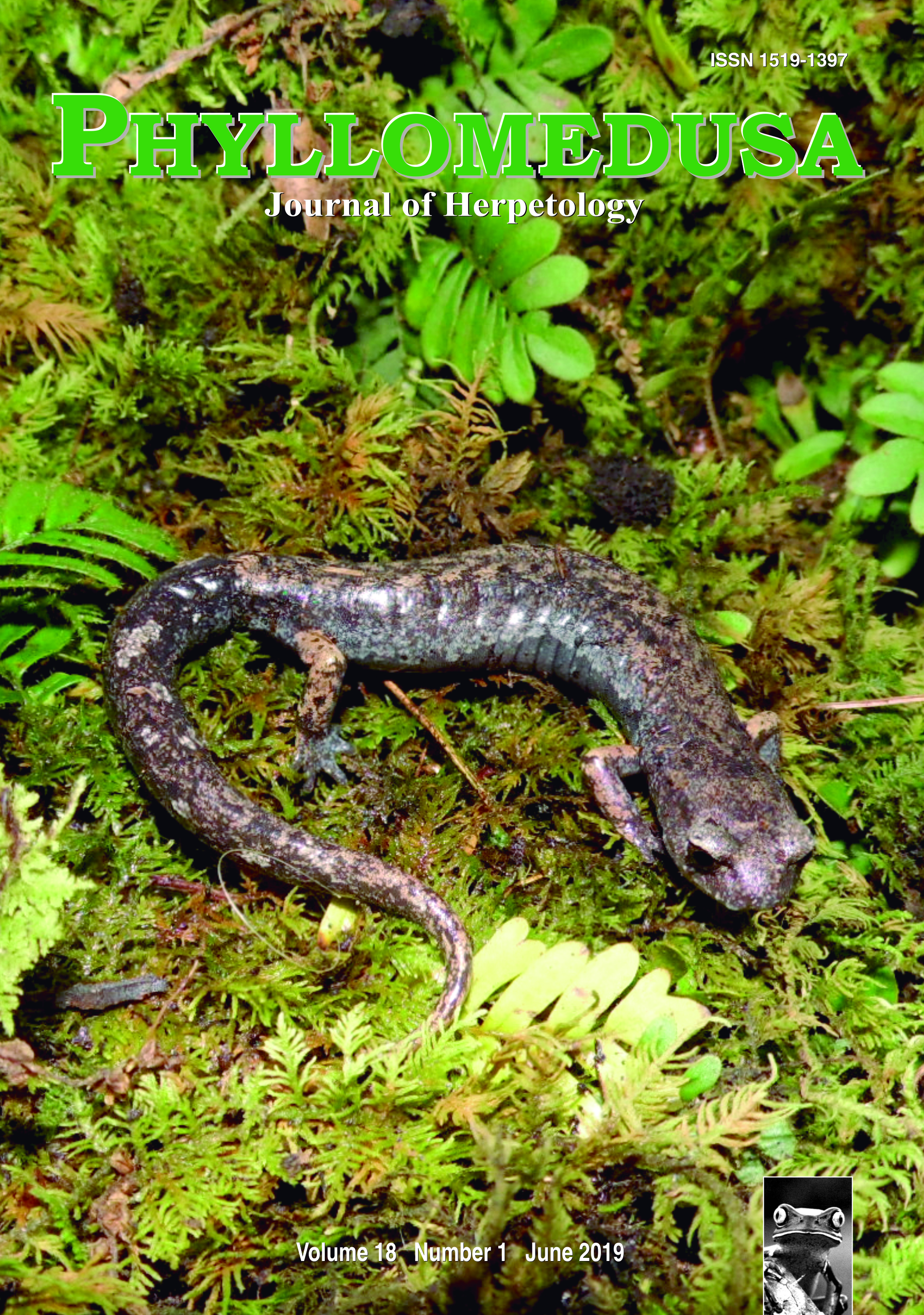Food habits of Rhinella proboscidea (Anura: Bufonidae) in terra firme forests of central Amazonia
DOI:
https://doi.org/10.11606/issn.2316-9079.v18i1p37-46Keywords:
amphibians, diet composition, Formicidae, northern BrazilAbstract
Food habits of Rhinella proboscidea (Anura: Bufonidae) in terra frme forests of central Amazonia. Anuran species are considered generalist and opportunist feeders. However, some species have dietary specializations. Here we describe the diet composition of Rhinella proboscidea based on the stomach content of 29 individuals captured in terra frme forests in Manaus and São Sebastião do Uatumã, state of Amazonas, Brazil. Each prey item was measured and identifed to Order, Suborder or Family; ants were identifed to Genus. We determined and tested for differences in the trophic niche breadth and the relationships between the frog size and the volume of the largest prey item. We recorded 1614 prey items of 44 taxa. Hymenoptera was the most abundant Order followed by Isoptera, Acari, Coleoptera, Orthoptera, Araneae, Hemiptera, Dermaptera, Diptera, and Collembola. Formicidae comprised 46.56% of the all stomach items and was represented by six subfamilies and 22 genera. Additionally, we found 80 nematodes in a total of 18 frogs. There was a signifcant difference in the trophic niche breadths of the study areas, and a positive relationship between the toad size and volume of the largest prey item consumed. Rhinella proboscidea feeds on a variety of invertebrates, with ants, termites, and mites being the most abundant; this suggests that the toad is an active forager. The most common subfamily was Myrmicinae primarily represented by Crematogaster and Atta. Differences in trophic niche breadths of the study areas may be related to seasonal differences in the diet composition or local factors.



 Impact Factor (JCR): 0.400
Impact Factor (JCR): 0.400 CiteScore: 1.0
CiteScore: 1.0